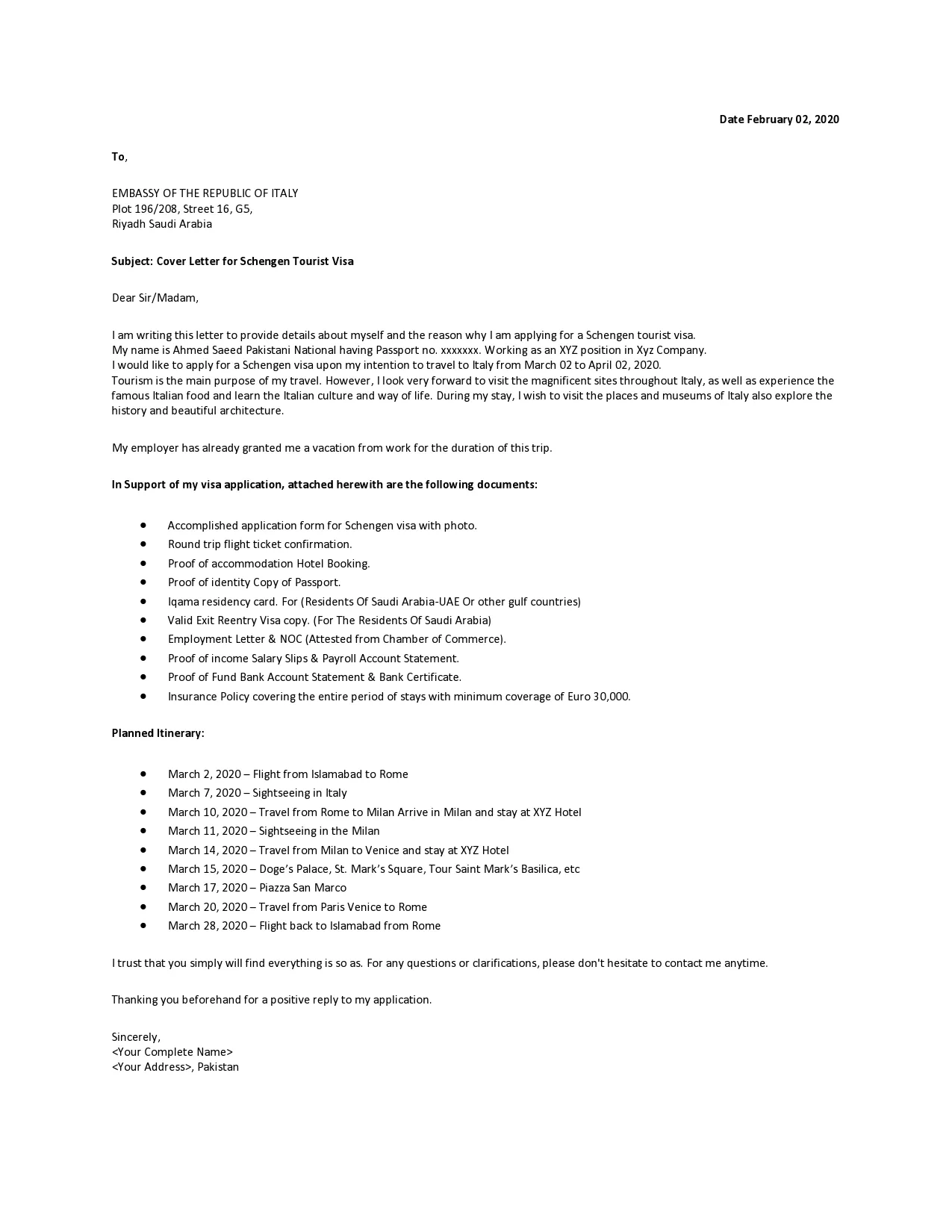What is a Schengen Visa Cover Letter
A Schengen visa cover letter is a crucial document accompanying your Schengen visa application. It serves as a formal introduction of yourself to the visa officer and provides essential information regarding your travel plans. The letter explains the purpose of your visit, the duration of your stay, and other relevant details that support your application. It’s essentially your opportunity to present a clear and concise overview of your trip, assuring the consulate or embassy that you meet the requirements for entry into the Schengen Area. A well-crafted cover letter can significantly increase your chances of visa approval by addressing potential concerns and presenting a compelling case for your travel.
Why Do You Need a Cover Letter
The primary purpose of a Schengen visa cover letter is to provide clarity and context to your application. While the application form requires you to fill in specific information, the cover letter allows you to elaborate on your intentions and provide a narrative that supports your claims. It helps the visa officer understand the purpose of your visit more comprehensively, addressing any potential ambiguities or concerns. Moreover, a cover letter demonstrates your seriousness and attention to detail, showing that you are well-prepared and committed to complying with the Schengen visa regulations. It’s your chance to make a positive first impression and differentiate your application from others.
Essential Information to Include
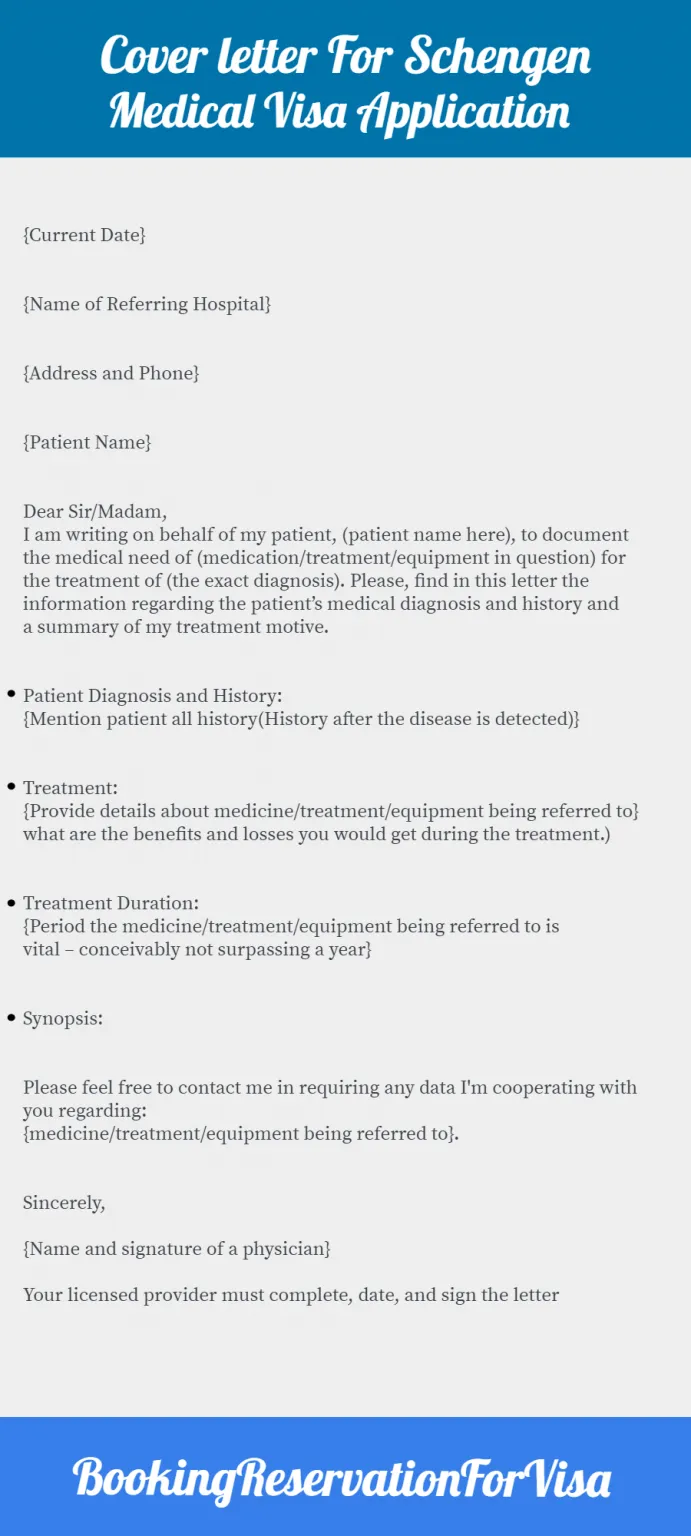
Personal Details and Purpose of Visit
Begin by introducing yourself, including your full name, nationality, passport number, and contact information. Clearly state the purpose of your visit to the Schengen Area – whether it’s tourism, business, study, or visiting family/friends. Provide specific details about why you are traveling, such as the specific attractions you plan to visit, the business meetings you will attend, or the educational institution you will be enrolled in. The more detailed you are, the better the visa officer understands your intentions. Also, mention the dates of your travel, including the entry and exit dates. This provides a clear timeframe for your stay.
Travel Itinerary Details
Include a detailed itinerary that outlines your planned activities during your stay. This should include the cities or countries you plan to visit, the specific places you intend to visit, and the dates you will be at each location. If you have booked flights, provide flight details, including flight numbers, departure and arrival airports, and dates. Similarly, provide details about any planned accommodations, such as hotel names and addresses, or the address of the person you are visiting. A well-organized itinerary demonstrates that you have planned your trip thoroughly and have a clear understanding of your travel arrangements.
Financial Resources
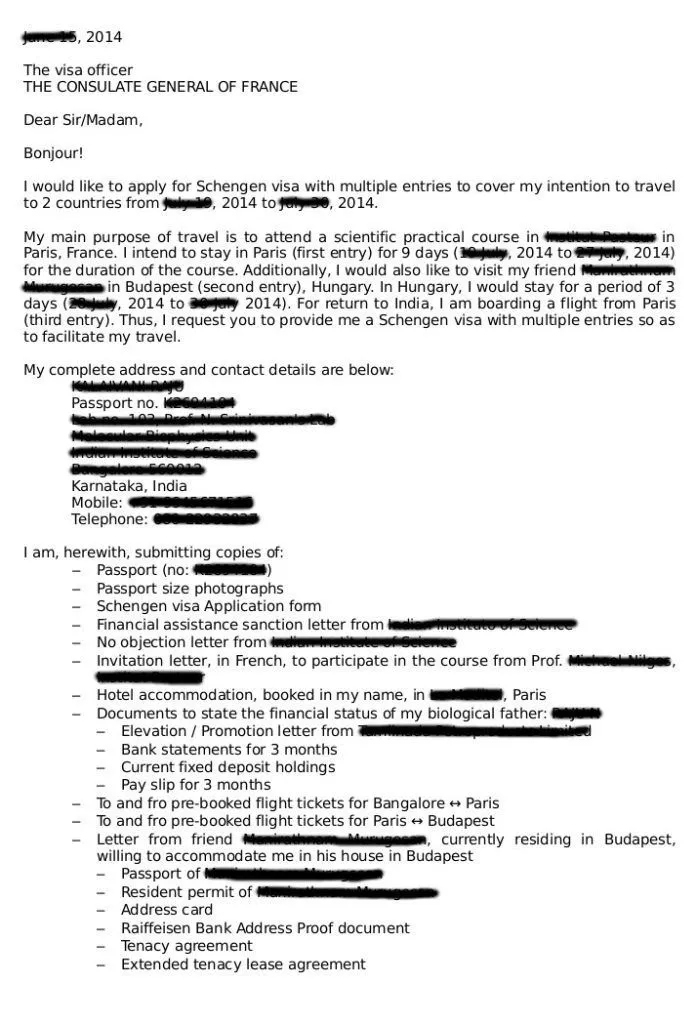
You must demonstrate that you have sufficient financial means to cover your expenses during your stay in the Schengen Area. Specify your source of income, such as employment, savings, or sponsorship. If you are employed, include your job title, employer’s name, and the duration of your employment. If you have sufficient savings, mention the amount available in your bank account. If someone is sponsoring your trip, provide their full name, contact details, and a letter of sponsorship. Also, provide bank statements for the past three to six months to prove your financial stability. This demonstrates that you can support yourself financially during your trip.
Accommodation Information
Provide detailed information about your accommodation arrangements. If you have booked a hotel, include the hotel’s name, address, and the dates of your stay. If you are staying with friends or family, provide their full name, address, and a letter of invitation. The letter of invitation should confirm that they will be accommodating you and may also mention the duration of your stay. Provide a copy of the accommodation booking or the invitation letter with your application to verify the information provided. This information assures the visa officer that you have a place to stay during your visit and that you have made the necessary arrangements.
Supporting Documents
List all the supporting documents you are including with your application. This includes your passport, visa application form, flight bookings, hotel reservations, bank statements, employment letter, and any other relevant documents, such as a marriage certificate or birth certificate. Make sure that all your documents are organized and clearly labeled. Providing a complete and organized set of documents simplifies the visa officer’s review process and increases your chances of visa approval. Ensure that you have photocopies of all original documents and that they are easily accessible.
Format and Structure of Your Cover Letter
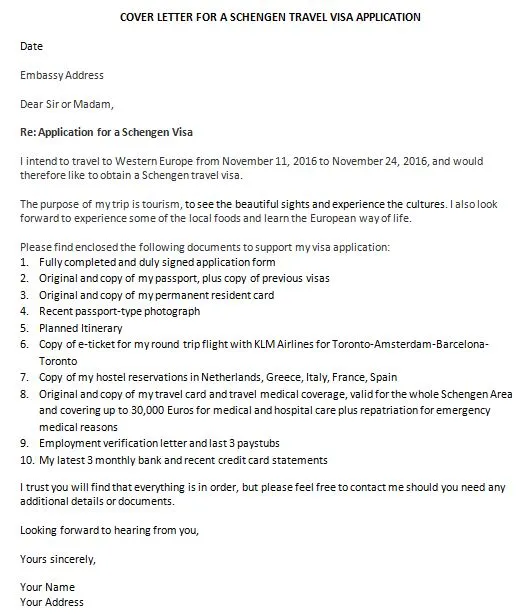
Header and Salutation
Begin your cover letter with your full name, address, and contact information at the top left or right corner. Below this, include the date and the embassy or consulate’s address. Use a formal salutation, such as “To the Visa Officer” or “Dear Sir/Madam.” If you know the name of the visa officer, you can use it to make the letter more personal. Using a professional and respectful tone from the beginning sets the right mood and shows you are serious about your application. Ensure the formatting is clean and easy to read, as it reflects your attention to detail.
Body Paragraphs
The body of your cover letter should consist of several paragraphs that cover the essential information outlined earlier. Start by stating the purpose of your letter, followed by your personal details and the purpose of your visit. Then, provide details about your travel itinerary, financial resources, accommodation, and supporting documents. Each paragraph should be concise and focused on a specific aspect of your trip. Use clear and straightforward language, avoiding unnecessary jargon. This ensures that the visa officer can quickly understand the information. The tone should be polite and professional.
Closing and Signature
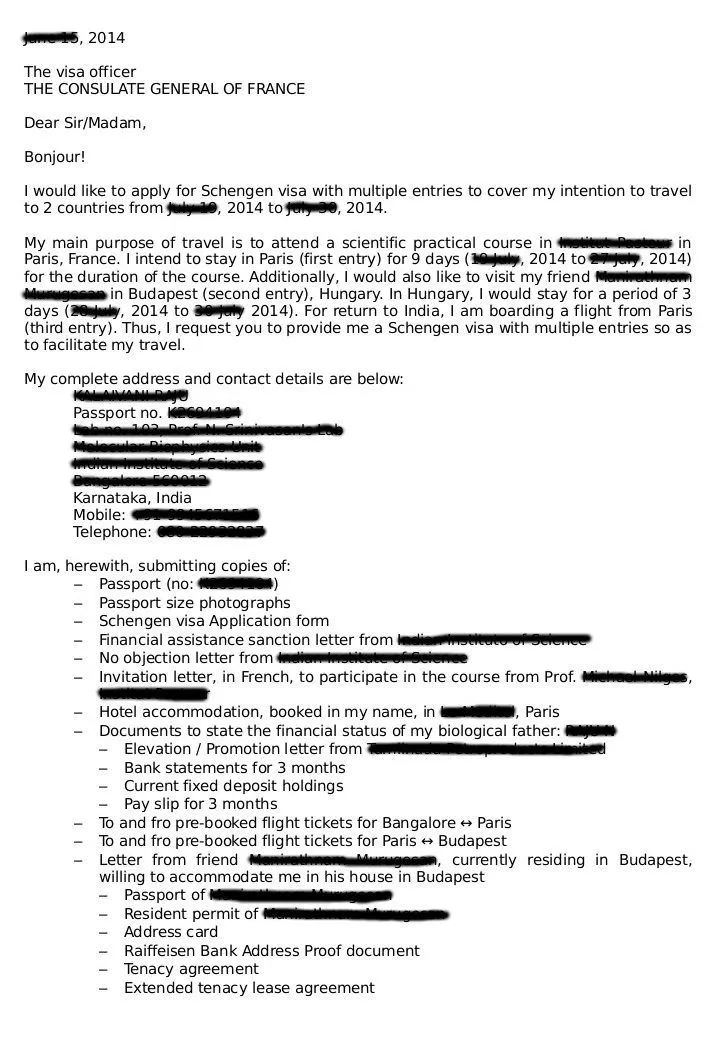
Conclude your cover letter by thanking the visa officer for their time and consideration. Reiterate your intention to comply with all visa regulations and assure them that you have provided all the necessary information. Use a formal closing, such as “Sincerely” or “Yours faithfully.” Sign the letter with your full name and include your printed name below your signature. The signature confirms the accuracy of the information and demonstrates that you have taken responsibility for the statements made in the letter. A well-structured closing creates a positive impression and strengthens your application.
Proofreading and Submission
Before submitting your cover letter, carefully proofread it for any grammatical errors, spelling mistakes, or inconsistencies. Ensure that all the information is accurate and that the dates and details match the other documents you are submitting. Ask a friend or family member to review the letter for any potential issues. Make sure to print and sign the cover letter. Submit the original cover letter along with your visa application and all required supporting documents. Presenting a polished and error-free cover letter enhances your credibility and significantly improves your chances of visa approval.
Common Mistakes to Avoid
Using the Right Tone
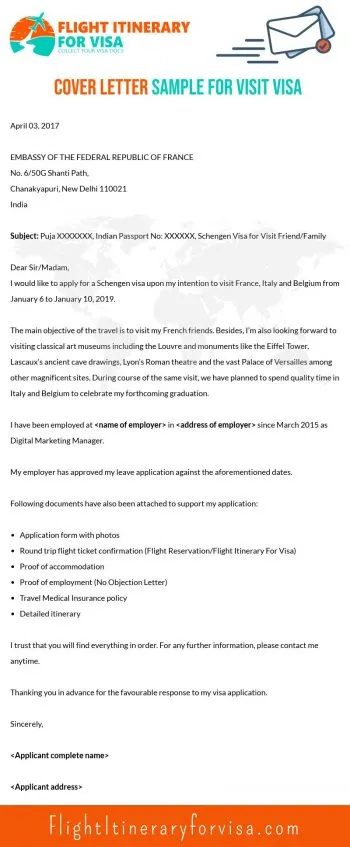
Maintain a formal and respectful tone throughout your cover letter. Avoid using informal language, slang, or overly casual expressions. Ensure that your writing is clear, concise, and professional. The tone should reflect your seriousness and commitment to complying with visa regulations. A respectful tone demonstrates that you value the visa officer’s time and consideration. Maintaining a professional tone throughout the letter is critical for a successful application. It is important to avoid being overly emotional or demanding.
Avoiding Plagiarism
Do not copy or plagiarize content from online sources or other cover letters. Customize your cover letter to reflect your personal circumstances and travel plans. Using your own words and providing authentic information demonstrates your integrity and sincerity. Plagiarism can lead to the rejection of your visa application, as it raises concerns about the authenticity of your information. Write your cover letter from scratch, ensuring originality and accuracy. Make sure that the details provided in your letter align with the supporting documents.
Staying Concise
Keep your cover letter concise and to the point. Avoid including irrelevant information or unnecessary details. Focus on providing essential information that is directly relevant to your visa application. A well-organized and concise cover letter shows that you respect the visa officer’s time and understand the importance of clarity. Provide a clear and logical structure. Keep each paragraph short and focused on a specific point. This allows the visa officer to quickly grasp the information. Avoid using overly complex sentences or jargon.
Conclusion
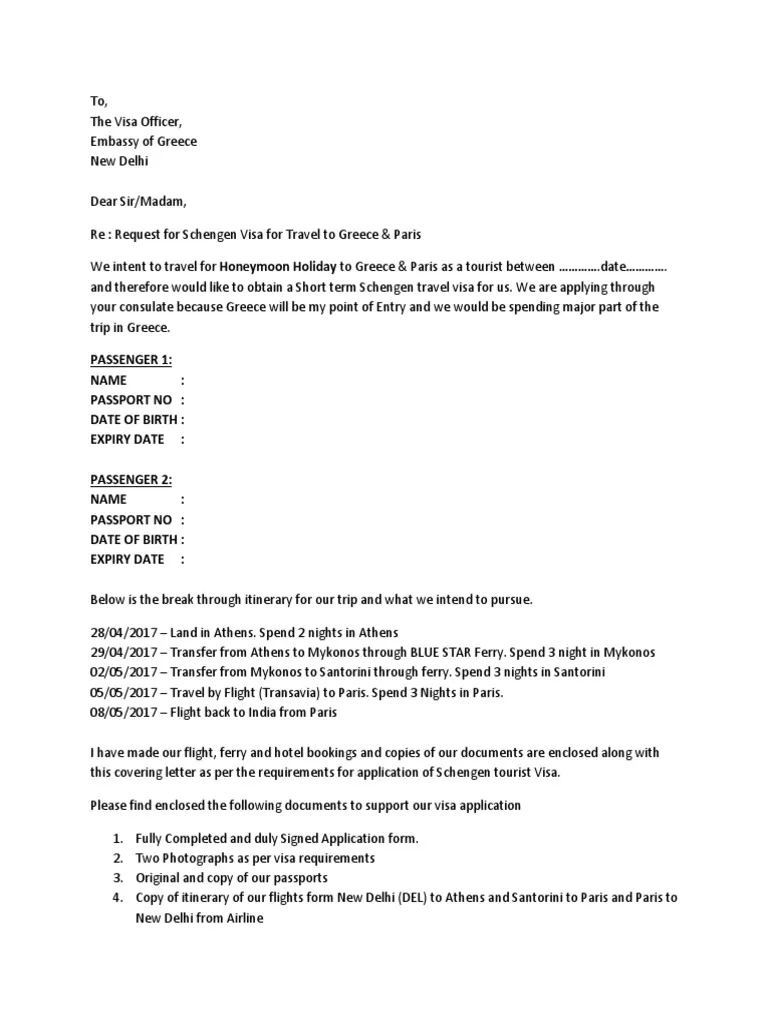
A Schengen visa application cover letter is a critical component of your visa application. By following these guidelines, you can craft a compelling and informative letter that increases your chances of visa approval. Remember to be clear, concise, and honest in your statements and always proofread your letter before submission. A well-written cover letter provides essential context and details to support your visa application. Always ensure that the information in your cover letter is consistent with the supporting documents. By paying careful attention to these details, you can significantly enhance your chances of a successful Schengen visa application and enjoy a smooth and pleasant trip.
